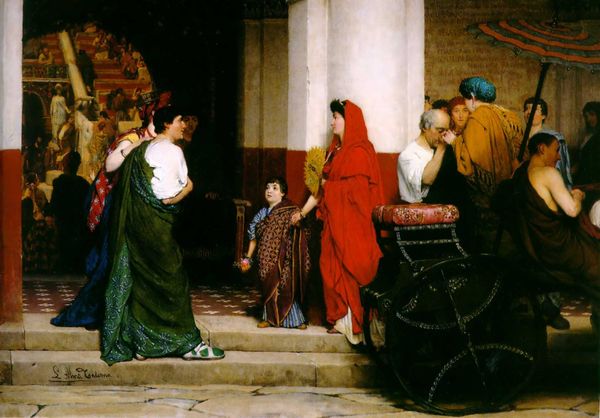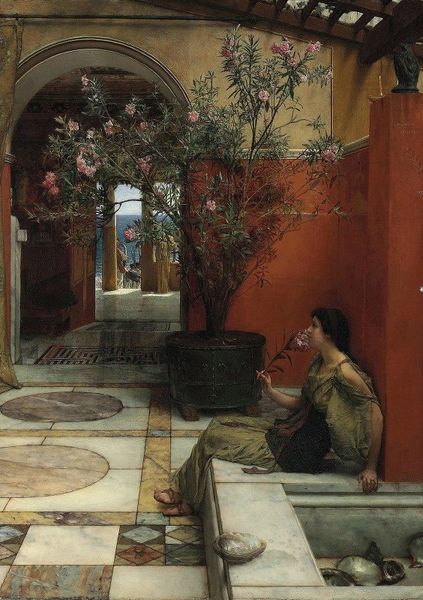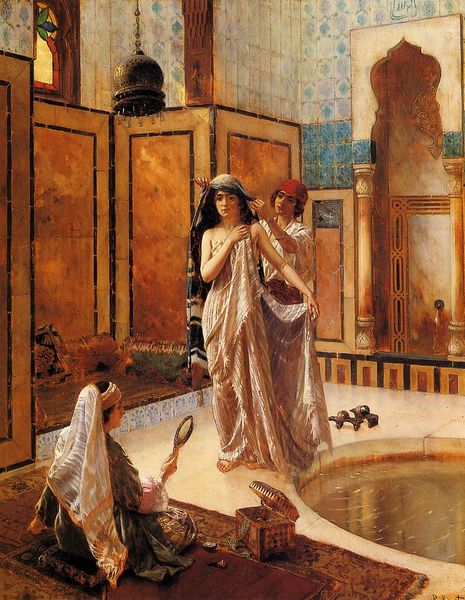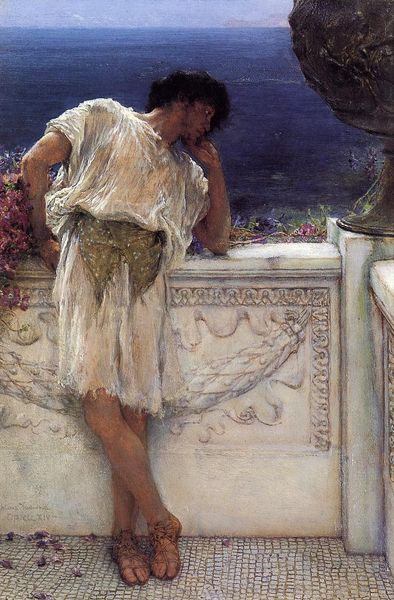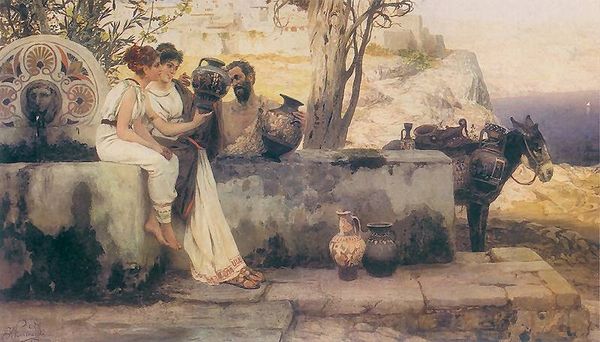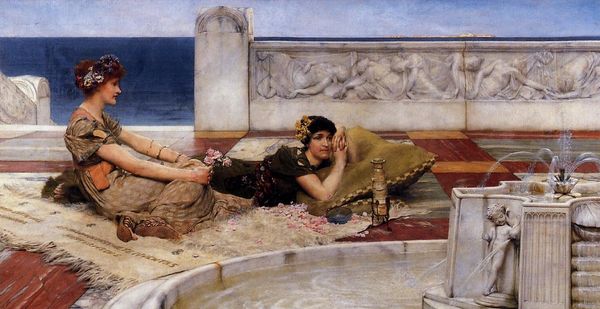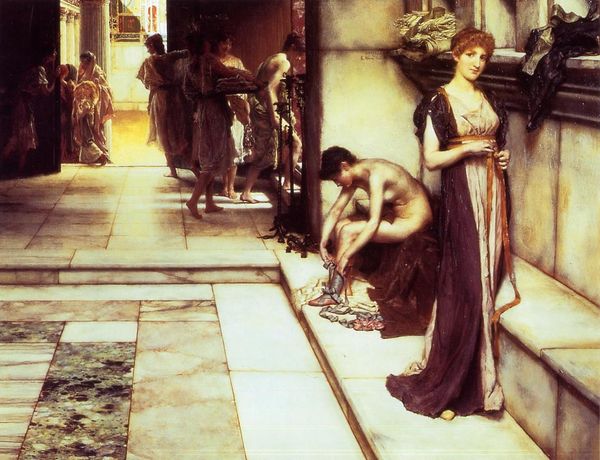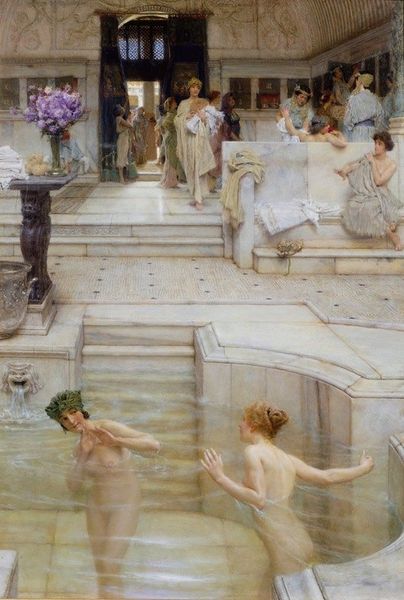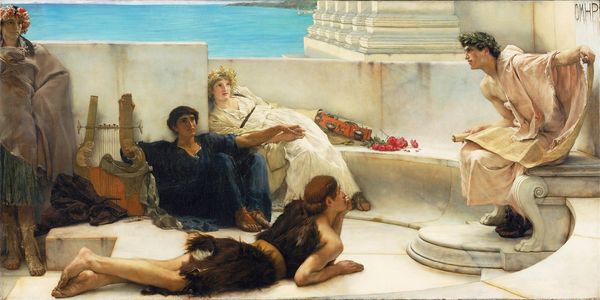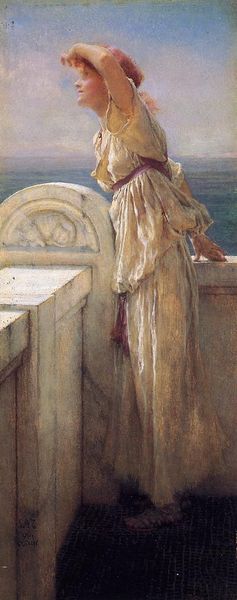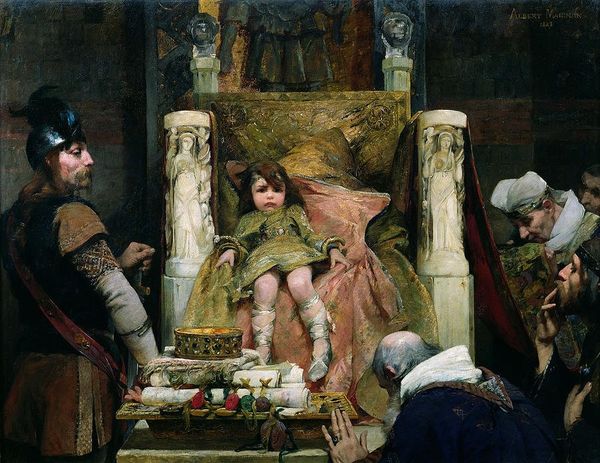
Dimensions: 59.8 x 38 cm
Copyright: Public domain
Editor: We're looking at "An Exedra," painted in 1869 by Lawrence Alma-Tadema, rendered in oil on panel. I'm immediately struck by the contrast between the bustling group and the solitary figure in the foreground; there's a real tension created through their spatial relationship. How do you interpret this work from a more formalist lens? Curator: Precisely. Disregarding anecdotal interpretations, we can appreciate the careful balance of forms. The exedra itself, with its semi-circular structure, provides a contained space for the figures, while the contrasting lines of the foreground create a dynamic counterpoint. Note also the considered placement of light and shadow; where does the strongest contrast exist and what effect does it achieve? Editor: I see the brightest light illuminates the group on the exedra, almost theatrical. It makes me focus on their interactions, but also contrasts sharply with the shaded foreground, especially the individual there. Curator: Exactly. The artist orchestrates our gaze through contrasting application, employing impasto in some sections to highlight particular visual aspects. Notice the surface materiality created on the garments in the right grouping, and consider the effect. Is this the case across the picture surface? Editor: No, that impasto is only really present in certain sections. It creates a real sense of depth there; is he using these elements to communicate relative importance, guiding our reading of the image? Curator: Potentially. Though it can be fruitful to engage with these compositional and material structures in isolation, consider their broader influence. By thinking about these formal devices and their arrangement, we have greater potential to decode an array of alternate readings and arrive at further insights into the aesthetic function of this image. Editor: This close analysis really illuminates how form impacts our perception. Curator: Precisely. Every artistic decision about structure, color, line, etc. channels how we receive this image; hopefully, viewers now possess the interpretive tools to appreciate these qualities in a work of art and think of ways of deriving new interpretive readings.
Comments
No comments
Be the first to comment and join the conversation on the ultimate creative platform.
